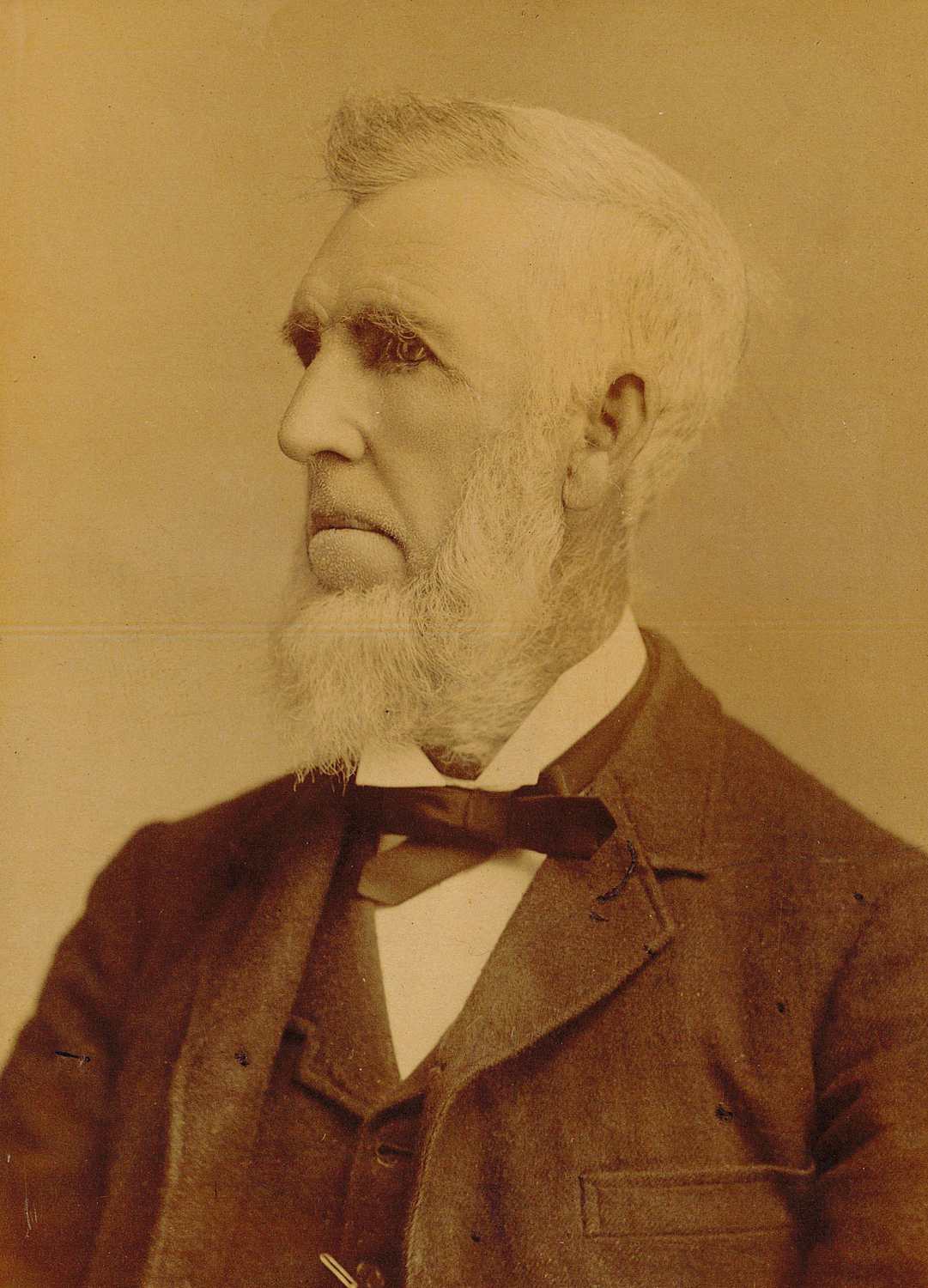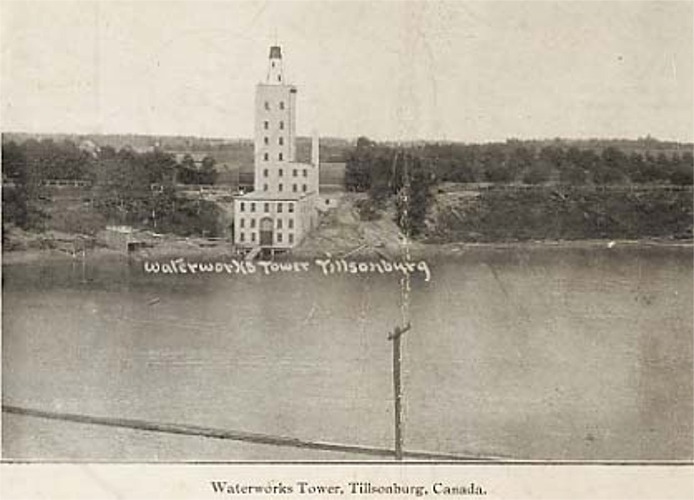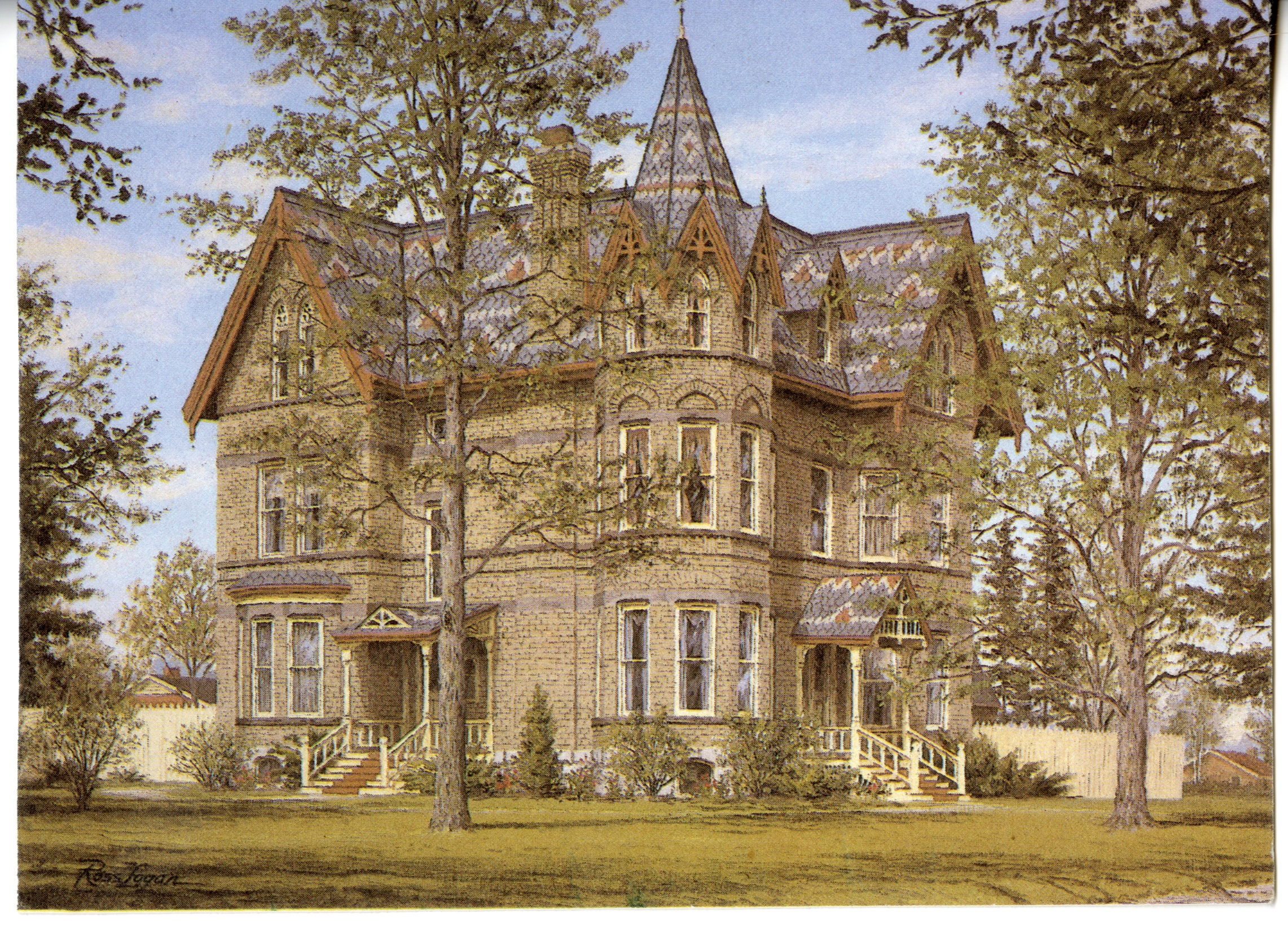Business Ventures of E.D. Tillson
The son of George Tillson, Edwin Delevan Tillson began his business career in Tillsonburg in 1846 when he formed a partnership with Wright Barker and Charles Cody to construct a sawmill on Clear Creek. Through this venture, E.D. Tillson was able to acquire enough capital to build a second sawmill, and later was able to buy his father’s mills and water-rights. By the 1860s, he was operating a sawmill, a grist mill, a planing mill, a sash-and-door factory, and even a store. Beginning in 1865, he expanded his operations to include an oat-mill and flour mill, and adopted new technological advances in milling, which included a shift from millstones to rollers.
Tillson’s most well-known business endeavor was the development and marketing of the patented Tillson Pan-Dried Oats. Following a bout with typhoid, it was said a doctor recommended that he eat oatmeal after his recovery. However, as the food staple wasn’t available locally, Tillson took it upon himself to build his own mill. Constructed in 1873, the mill produced 125 barrels of rolled oatmeal per day using traditional methods. Following a fire in 1878, the mill was replaced with a larger structure which incorporated Tillson’s patented method of dry kiln-preparation, which greatly improved the processing and, more importantly, the taste of the oatmeal.
Tillson’s Pan-Dried Oats soon became the number one cereal in Canada and led to Tillsonburg being nicknamed “the Pan-Dried Town”. In addition, Tillson’s oats were soon internationally known with barrels of oatmeal being shipped to countries in Europe and South America, and even as far as South Africa. Due to its popularity, the mill would often run 24 hour shifts to meet the demands and is said to have produced upwards of 200 barrels a day. A large advertisement and marketing scheme also helped to ensure the product’s popularity.
Aerial view of E.D. Tillson's "mill empire" [courtesy of Annandale N.H.S. & Museum]
![Aerial view of E.D. Tillson's "mill empire" [courtesy of Annandale N.H.S. & Museum]](/media/4urjcswx/1987_16_53-e-ds-milling-empire-annandale.jpg)
A second aerial view of E.D. Tillson's mills and related property [courtesy of Annandale N.H.S. & Museum]
![A second aerial view of E.D. Tillson's mills and related property [courtesy of Annandale N.H.S. & Museum]](/media/m3yom3nz/1987_16_54-e-ds-milling-empire-2-annandale.jpg)
The Tillson pea and barley mill [courtesy of Annandale N.H.S. & Museum]
![The Tillson pea and barley mill [courtesy of Annandale N.H.S. & Museum]](/media/ojccx4bj/2015_24_50front-tillson-pea-and-barley-mill-annandale.jpg)
A postcard featuring the Tillsonburg mills, circa 1900-1910

Following E.D.’s death, the Tillson heirs joined a milling co-operative called the Canadian Cereal & Milling Company. The company consisted of mill owners from Ontario and Quebec who thought to join forces against the growing milling interests of Western Canada. By 1916, the Canadian division of the Quaker Oats Company purchased the co-operative and in one fell swoop took control of 10 mills in Ontario and Quebec, effectively wiping out the competition. This purchase not only included the mill in Tillsonburg, but the patent for the pan-dried method. Quaker would switch production of the Tillsonburg mill from oatmeal to Quaker Natural Bran Flakes, continuing operations until a fire in 1921 destroyed the mill, which was not rebuilt.
Along with his mills, Tillson also dove into other business ventures. One of his early investments was with his father in the Ingersoll and Pt. Burwell Road Company and later the Tillsonburg and Middleton Plank and Gravel Road Company. Likewise, he was instrumental in the establishment and improvement of roads in town and in 1864, at his own expense, graded Broadway in an attempt to smooth it out. In the 1890s, he formed a railway company to build a spur between the mills and a divisional line of the Great Western Railway.
Tillson also dabbled in exploration of oil and salt wells, with the formation of the Tillsonburg Joint Stock Company in 1863; would open a brickyard and pottery works which by the 1880s was said to be “one of the largest and best in the county, if not the province”; and was instrumental in the construction of the Tillsonburg Waterworks System.
One of Tillson’s last achievements was Annandale, his model farm, which was compared to the Ontario Agricultural College in Guelph due to its fine construction and scientific operations. The farm incorporated modern farming techniques which included selective breeding of Holstein cattle, underground ventilation, and sterilization of the dairy and meat-processing buildings.
E.D. Tillson would pass away on December 31, 1902 and is considered one of the prominent Canadian industrialists of the late 19th century.

Certification of Mary Ann Tillson's ownership of 200 shares of the Capital Stock of E.D. Tillson Estate Limited, 16 June 1902. [courtesy of Annandale N.H.S. & Museum]




![Aerial view of the Annandale barn on Tillson's model farm [courtesy of Annandale N.H.S. & Museum]](/media/abkdmxcs/84_00_14-annandale-barn-1-annandale.jpg)
![The interior of the Annandale barn on Tillson's model farm, circa mid-1890s to early 1900s. [courtesy of Annandale N.H.S. & Museum]](/media/0lgaztpy/1981_27_03b-interior-annandale-barn-annandale.jpg)